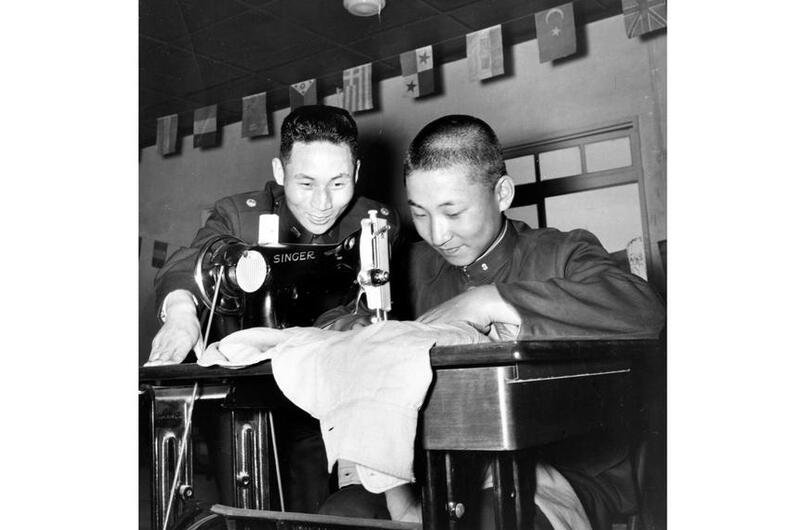The shoeshine boys of Seoul

Lt. Kwong Eung Pal instructs one of the pupils at his “Shoeshine Boys’ School” during sewing class.
October 6, 2025
This article first appeared in the Stars and Stripes Pacific edition, June 6, 1957. It is republished unedited in its original form.
On a cold March day in 1952, some American soldiers whose rifles indicated they might have just come from the front, paused on a street in Seoul and gave candy bars to hungry children.
The gesture may have been quickly forgotten by the soldiers themselves, but, unknown to them, it was the start of Seoul’s Shoeshine Boys’ School.
Today, the institution is training nearly 700 orphan boys, and a few girls, to meet the problems they face alone in the world.
And it’s all because a shy onlooker, Sgt. Kwon Eung Pal of the Korean National Police happened to be watching those American soldiers in 1952.
Kwon, now a lieutenant, credits the incident for being the primary factor in his decision to help the homeless children.
“I realized it was part of my responsibility to help care for the problems of my own country,” Kwon says. “But I didn’t dare approach the boys myself, because in those days they’d run away from a policeman.”
“Today,” he smiles, “it’s different. They’ve learned a policeman can be their best friend.”
The day after the candy bar incident Kwon began trying to round up beggar children. At first they ran like frightened animals, but gradually he won the confidence of seven boys. He brough them food and took them on a picnic.
Word of the friendly policeman spread and before long his followers were assuming the proportions of a small Boys’ Town. They lived in bombed-out buildings, tents and boxes.
They boys have since moved up Nam San Hill overlooking Seoul. Their school consists mostly of makeshift tents reinforced with packing cases and cardboard. An exception is a workshop constructed with funds from the U.N. Korean Reconstruction Agency (UNKRA).
There, using bandsaws, drills, lathes and sewing machines, the boys take a three-year course to qualify for industrial jobs. Mechanical equipment was provided by funds collected by the U.N. Women’s Guild.
In the evening, when Kwon has finished his police duties, he hikes up the hill to instruct the boys. No child is forced to stay and none has run away.
Since the school began in 1952, 816 boys have “graduated,” that is, gone into self-supporting enterprises. Of the 671 now attending 483 shine shoes on the streets; 59 sell newspapers; 39 sell other commodities; 33 have part-time jobs; 19 work in shops and 38 are considered too young to work.
Kwon has had much satisfaction in watching his school develop, but he has one regret. He never knew or was able to thank the American soldiers who gave candy to the hungry Korean children.



